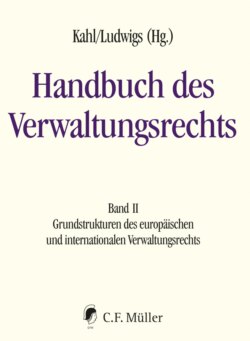| 1. | This chapter deals with the attribution and delimitation of competences in the European Union. The analysis focuses on legislative powers, as judicial and executive powers are discussed elsewhere in this volume (par. 1–3). |
| 2. | The delimitation of powers and competences is a classical topic of federalism. However, the European Union is not a federal structure. This and the complexity of the issue justify a closer look at concepts and approaches related to competences (par. 4–39). |
| 3. | First of all, the term and the concept of Kompetenz are quite fuzzy and ambiguous, which is also reflected in the fact that translations such as “competence” fail to capture the specific German connotations of Kompetenz. As a working definition, I suggest that competences may be understood as powers of public authority that are limited and attributed specifically to defined enti ties, in short: a legal title to generate legally relevant decisions (par. 4–7). |
| 4. | Competence provisions may take the form of positive attributions (defining what the entity is allowed to do) and negative provisions (defining what the entity is not allowed to do) (par. 8–15). |
| 5. | There is also an established distinction between provisions that deal with the attribution and delimitation of powers and competences (the “if” of competence) and provisions concerning the exercise of powers and competences (the “how” of competence). Examples of the latter are the principles of subsidiarity and proportionality, dealt with in detail elsewhere in this volume (par. 16–18). |
| 6. | The cornerstone of the European allocation of legal competences is the principle of conferral, laid down in Art. 5 TEU. It stipulates that the EU may act only within the limits of the competences that the Member States have conferred upon it in the Treaties, while all other powers and competences remain with the Member States (par. 19–20). |
| 7. | The concept of the attribution of competences raises the question of who has the competence to decide on competences, who has the Kompetenz-Kompetenz? Although this term from German federal theory of the 19th century is fascinating not least because of its potential infinity (who has the Kompetenz-Kompetenz-Kompetenz?), it has no added explanatory value that goes beyond the principle of conferral (par. 21–24). |
| 8. | The same is true for the concept of the Member States as the “masters of the treaties” (par. 25–28). |
| 9. | The present chapter elaborates on three particularities of the European allocation of competences: the link between negative integration and positive integration, the phenomenon of abolished competences (compétences abolies), and the incongruence of competence perspectives at the national and the EU level (par. 29–39). - There is some evidence that the scope of application of negative integration mechanisms such as the fundamental freedoms determines the potential scope of EU legislation (par. 30–32). - According to a common misunderstanding, the relationship between Member State competences and EU competences is best understood as a zero-sum game: what is lost at one level is gained at the other level, and vice versa. This does not capture the fact that certain public powers have vanished at all levels, e. g. the power to regulate using a discriminatory distinction based on nationality (par. 33–37). - There is a conceptual incongruence and dissonance between the German perspective on competence, based on policy topics, and the approach in the Treaties, based on objectives (par. 38–39). |
| 10. | Art. 2 to 6 TFEU, categories and areas of competences, offer an overview of the current European competence order. In legal terms, however, these provisions cannot serve as the basis for legislation; the actual legal entitlements are still scattered all over the founding treaties (par. 40–51). |
| 11. | The listings of Art. 2 to 6 TFEU do not mention administration and administrative law. Art. 6 (g) TFEU introduces a competence for administrative cooperation, albeit of limited reach (par. 52–53). |
| 12. | Art. 2 to 6 TFEU do not include numerous elements of the European competence order, such as the flexibility clause laid down in Art. 352 TFEU (par. 54–58). |
| 13. | Numerous negative competence provisions, from public service reservations to the identity clause in Art. 4 (2) TEU, shape and limit the EU’s competences (par. 59–68). |
| 14. | In order to understand the dynamics of the attribution of competences and their impact on administrative law, it is helpful to look at case studies in particular areas. I use legislation on the common market, environmental law, state aid control and migration law as reference areas (par. 69–89). |
| 15. | Considering its complexity, it is clear that there is a huge potential for conflict and dissent in the European competence order. Thus, the question of who has the final word on matters of EU competence is crucial. The Treaties attribute this function to the ECJ (par. 90–98). |
| 16. | The German Federal Constitutional Court has also claimed the final word on European “ultra vires acts”, which potentially puts the stability of the European legal order at risk (par. 99-104). |
| 17. | Entrusting existing or new institutions with the task of the ultimate umpire will not lead to better results (par. 105–107). |
| 18. | All in all, the Treaty of Lisbon has calmed the post-Nice debate on the delimitation of European powers and competences. Nevertheless, the Euro crisis and the Corona crisis have shown that the current arrangement of EU powers and competences may need to be revised (par. 108–110). |
